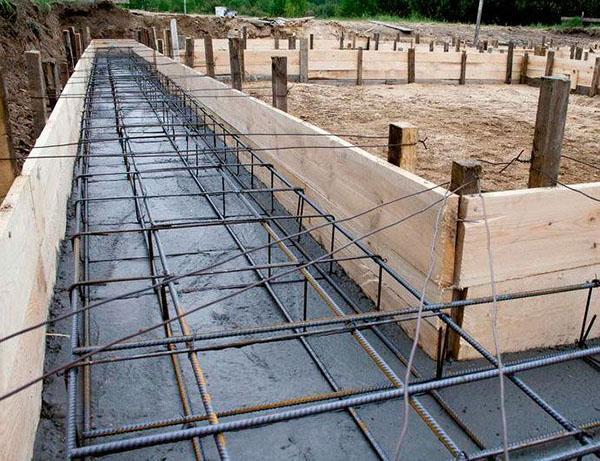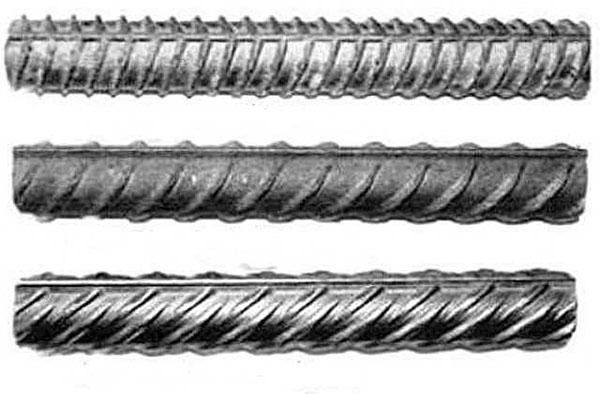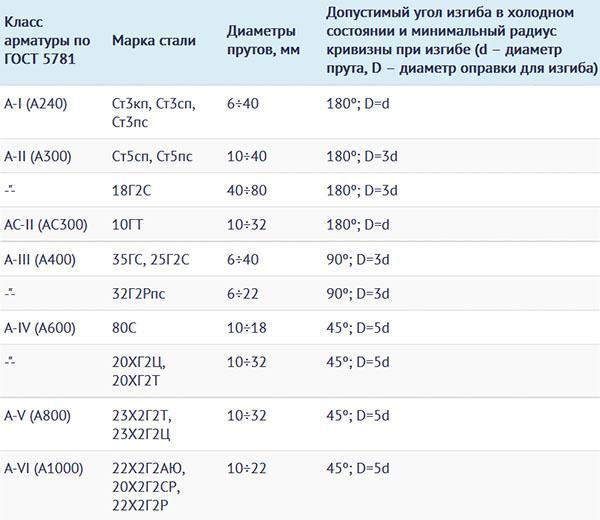Reinforcement of the strip foundation: technology and basic rules
 Every building and structure needs a solid foundation. In low-rise construction, reinforcement of the strip foundation is used for strengthening, the construction of which is one of the most important and costly stages.
Every building and structure needs a solid foundation. In low-rise construction, reinforcement of the strip foundation is used for strengthening, the construction of which is one of the most important and costly stages.
You should not save on the quantity and quality of the material, since neglect of technology and rules will lead to disastrous consequences.
The base device is carried out in the following sequence:
- Sampling of soil from the trench in accordance with the drawings for the reinforcement of the strip foundation.
- Execution of a sand cushion with a rammer.
- Installation of a steel reinforcement frame.
- When the outside temperature is below five degrees, the concrete should be heated.
- Fastening the formwork.
- Pouring concrete.
Before correctly reinforcing the foundation, you should find out the property of the soil, draw up a diagram, calculate the amount of material and purchase it.
Reinforcement of the strip foundation according to GOST 5781

- what diameter reinforcement is needed for the foundation;
- number of rods;
- their location.
If you plan to independently build and reinforce the strip foundation for the house, baths, garage, then they adhere to certain rules according to the current SNiP and GOST 5781-82. The latter presents the classification and assortment of hot-rolled round steel of periodic and smooth profile, intended for the reinforcement of conventional and prestressed reinforced concrete structures (reinforcing steel). And also, indicated:
- technical requirements;
- packaging, labeling;
- transportation and storage.
Before reinforcing the strip foundation, you should familiarize yourself with the reinforcement classification. By the appearance of the surface, rods are smooth and periodic in profile, that is, corrugated.
Maximum contact with the poured concrete can only be achieved when using reinforcement with a profile surface.
Reflection can be:
- annular;
- sickle;
- mixed.
Also, reinforcement is subdivided into classes A1-A6, depending on the grade and physical and mechanical properties of the steel used: from low-carbon to approaching alloyed.
When self-reinforcing a strip foundation, it is not at all necessary to know all the parameters and characteristics of the classes. It is enough to get acquainted with:
- steel grade;
- the diameters of the rods;
- permissible cold bending angles;
- bending radius of curvature.
These parameters can be given in the price list when purchasing materials. They are also presented in the table below:
The values from the last column are important in the manufacture of bent elements (clamps, legs, inserts), since an increase in the angle or a decrease in the bend radius will lead to a loss of strength properties of the reinforcement.
For independent execution of the strip foundation, a corrugated rod of class A3 or A2, with a diameter of 10 mm or more, is usually taken. For bent elements - A1 smooth reinforcement with a diameter of 6-8 mm.
How to place the reinforcement correctly
 The location of reinforcement in a strip foundation affects the strength and bearing capacity of the foundation. These parameters directly depend on:
The location of reinforcement in a strip foundation affects the strength and bearing capacity of the foundation. These parameters directly depend on:
- reinforcement thickness;
- length and width of the frame;
- rod shapes;
- knitting method.
In the course of use, the foundation is subjected to constant loads as a result of the movement of soils during frost heaving, subsidence, the presence of karsts and seismic, finally, from the weight of the building itself. Thus, the top of the base is mainly compressed and the bottom is tensile. There is practically no load in the middle. Therefore, it makes no sense to reinforce it.
In the reinforcement scheme, the tiers of the frame are located longitudinally along the top and bottom of the tape. If it is necessary to strengthen the foundation, identified during the calculation, additional tiers are installed.
For base heights exceeding 15 cm, smooth vertical transverse reinforcement is used.
It is faster and more convenient to make a frame from separate contours made in advance. For this, the rods are bent according to the specified parameters, forming a rectangle. They should be made the same, without deviations. You will need a lot of such elements. The work is quite laborious, but it will go into the trench quickly.
 The transverse reinforcement in the foundation is installed taking into account the loads that act across the foundation axis. It fixes the longitudinal rods in a given design position and prevents the occurrence and development of cracks. The distance between the rods depends on the brand, the method of placing and compacting the concrete, the diameter of the reinforcement and its placement in the direction of concreting. Also, do not forget that the foundation frame should be located 5-8 cm from the upper level of the fill and the edges of the formwork.
The transverse reinforcement in the foundation is installed taking into account the loads that act across the foundation axis. It fixes the longitudinal rods in a given design position and prevents the occurrence and development of cracks. The distance between the rods depends on the brand, the method of placing and compacting the concrete, the diameter of the reinforcement and its placement in the direction of concreting. Also, do not forget that the foundation frame should be located 5-8 cm from the upper level of the fill and the edges of the formwork.
 When connecting the rods, a knitting wire and a special hook are used. Welding is permissible only for fittings marked with the letter "C". The frame is assembled using rods and clamps that tie it into a single structure. The step of the reinforcement in the strip foundation should be 3/8 of its height, but not more than 30 cm.
When connecting the rods, a knitting wire and a special hook are used. Welding is permissible only for fittings marked with the letter "C". The frame is assembled using rods and clamps that tie it into a single structure. The step of the reinforcement in the strip foundation should be 3/8 of its height, but not more than 30 cm.
Sole reinforcement
 For a one-story house and in good soil conditions, the foundation is buried to the depth of soil freezing. In this case, the reinforcement of the sole of the strip foundation performs rather the function of insurance. It is made by placing a grid of rods at the bottom of the base. Mutual arrangement in this case does not matter. The main thing is that the concrete layer is no more than 35 cm.
For a one-story house and in good soil conditions, the foundation is buried to the depth of soil freezing. In this case, the reinforcement of the sole of the strip foundation performs rather the function of insurance. It is made by placing a grid of rods at the bottom of the base. Mutual arrangement in this case does not matter. The main thing is that the concrete layer is no more than 35 cm.
On soft soils or with a high design load, a foundation may be required with a wider base. Then the longitudinal reinforcement is used, as in the first case, and a separate calculation is required for the transverse one.
How to reinforce corners
 Abutments and corners in the bases represent the places of concentration of multidirectional stress. Incorrect joining of reinforcement in these problem areas will lead to the formation of transverse cracks, spalling and delamination.
Abutments and corners in the bases represent the places of concentration of multidirectional stress. Incorrect joining of reinforcement in these problem areas will lead to the formation of transverse cracks, spalling and delamination.
Reinforcement of the corners of the strip foundation is carried out according to certain rules:
- The rod is bent in such a way that one end of it goes deep into one wall of the base, the other into the other.
- The minimum allowance for a bar to another wall is 40 reinforcement diameters.
- Simple linked crosshairs are not used. Only with the use of additional vertical and transverse rods.
- If the bend onto another wall does not allow the length of the rod to be made, then an L-shaped profile is used to connect them.
- One clamp from another in the frame should be located at a distance of half that in the tape.
So that the loads in the corners of the strip base are evenly distributed, they make a rigid bundle of external and internal longitudinal reinforcement.
How to calculate reinforcement
 The calculation of the strip foundation reinforcement is carried out taking into account possible stresses during the construction and operation of the structure. For example, the longitudinal tension due to this design: vertical and transverse rods in long and relatively narrow channels have almost no effect on the distribution of loads, but act as fastening elements.
The calculation of the strip foundation reinforcement is carried out taking into account possible stresses during the construction and operation of the structure. For example, the longitudinal tension due to this design: vertical and transverse rods in long and relatively narrow channels have almost no effect on the distribution of loads, but act as fastening elements.
To calculate how much to put reinforcement in the foundation, you need to decide on its dimensions. For a narrow base of 40 cm, four longitudinal rods will be enough - two at the top and two at the bottom. If you plan to make a foundation measuring 6 x 6 m, then for one side of the frame you will need 4 X 6 = 24 m.Then the total number of longitudinal reinforcement will be 24 x 4 = 96 m.It is convenient to count it when you draw up a drawing of the reinforcement layout yourself.
If you cannot buy rods of the required length, then they can be overlapped (more than a meter) together.
The cost of the foundation consists of the price of the materials used and the amount of work. When calculating, it is better to use a project with the specified depth and base width. Also, the cost is influenced by the remoteness of the construction object and related work, such as:
- waterproofing;
- insulation;
- blind area;
- drainage;
- downpour.
All this adds up to the final price. Although for a small structure, the foundation can even be done by hand. The most difficult and lengthy in the construction of the foundation tape is its reinforcement, but you can cope alone. Of course, it is easier and safer to work with two or three assistants.